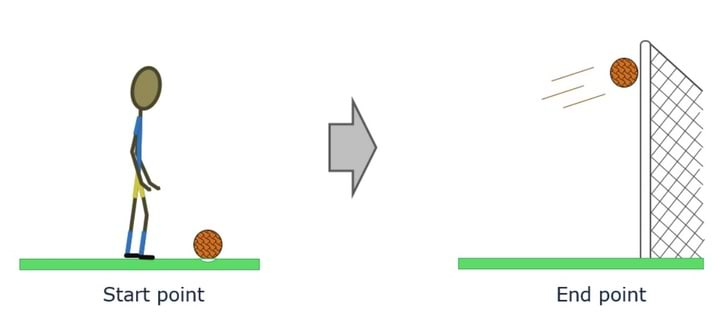Learning focus: | An energy store of some kind is necessary for something to happen, and something happens when energy transfers between energy stores. |
Observable learning outcome: | Identify the energy stores at the start and the end of an event |
Question type: | Diagnostic, simple multiple choice |
Key words: | Energy store, energy transfer, chemical, heat, gravitational, kinetic |
In teaching energy the BEST resources have adopted a framework based on ‘energy stores’ and ‘energy pathways’ which is advocated by, amongst others, (Boohan, 2014), (Millar, 2014) and (Tracy, 2014). As Millar (2014) says, this approach “is not perfect - but it is adequate and significantly better than [approaches] based on lists of ‘forms of energy’.” A clear guide to this approach can be found on the Institute of Physics’ website (Institute of Physics).
This question requires students to think carefully about situations at their start points and end points. Later in their studies, these are the points at which useful calculations can be made about the amount of energy in each store. Millar (2014) reminds us that in any transfer, some energy almost inevitably ends up in a heat store of energy, even when this is not the aim. Identifying transfers of energy to the heat store will support understanding of the idea of conservation of energy.
A summary of the BEST approach to teaching energy can be found on the Best Evidence Science Teaching home page which is on the STEM Learning website (Fairhurst, 2018).
Students should complete the question individually. This could be a pencil and paper exercise, or you could use an electronic ‘voting system’ or mini white boards and the PowerPoint presentation.
The answers to the question will show you whether students understood the concept sufficiently well to apply it correctly.
If there is a range of answers, you may choose to respond through structured class discussion. Ask one student to explain why they gave the answer they did; ask another student to explain why they agree with them; ask another to explain why they disagree, and so on. This sort of discussion gives students the opportunity to explore their thinking and for you to really understand their learning needs.
Differentiation
You may choose to read the questions to the class, so that everyone can focus on the science. In some situations it may be more appropriate for a teaching assistant to read for one or two students.
When Lola kicks the ball, energy is transferred from the chemical store of her leg to the gravitational store and the kinetic store of the ball, and to the heat store of the surroundings.
Answers B or D indicate that students may see the starting point as the action of kicking and not as a chemical store. Answer A indicates that students may not have fully thought about the different energy stores at the end point, or they may have considered just the instantaneous kick.
Only answers D and E identify the ‘hidden’ heat store of the air that fills up because the friction of the ball passing through the air causes heating. If students wave a hand through the air, they will be able to feel the air being pushed out of the way.
If students do not identify the energy stores accurately, it can be helpful to talk through a few more examples with the whole class, and then to give students the opportunity to try a few more in pairs or small groups, in order to consolidate understanding.
The following BEST ‘response activity’ could be used in follow-up to this diagnostic question:
- Response activity: Energy stores circus
Boohan, R. (2014). Making sense of energy. School Science Review, 96(354), 11.
Fairhurst, P. (2018). Teaching Energy. [Online]. Available at: https://www.stem.org.uk/best-evidence-science-teaching.
Institute of Physics. Supporting Physics Teaching (SPT): Energy [Online]. Available at: http://supportingphysicsteaching.net/EnHome.html [Accessed July 2018].
Millar, R. (2014). Teaching about energy: from everyday to scientific understandings. School Science Review, 96(354), 6.
Tracy, C. (2014). Energy in the new curriculum: an opportunity for change. School Science Review, 96(354), 11.
